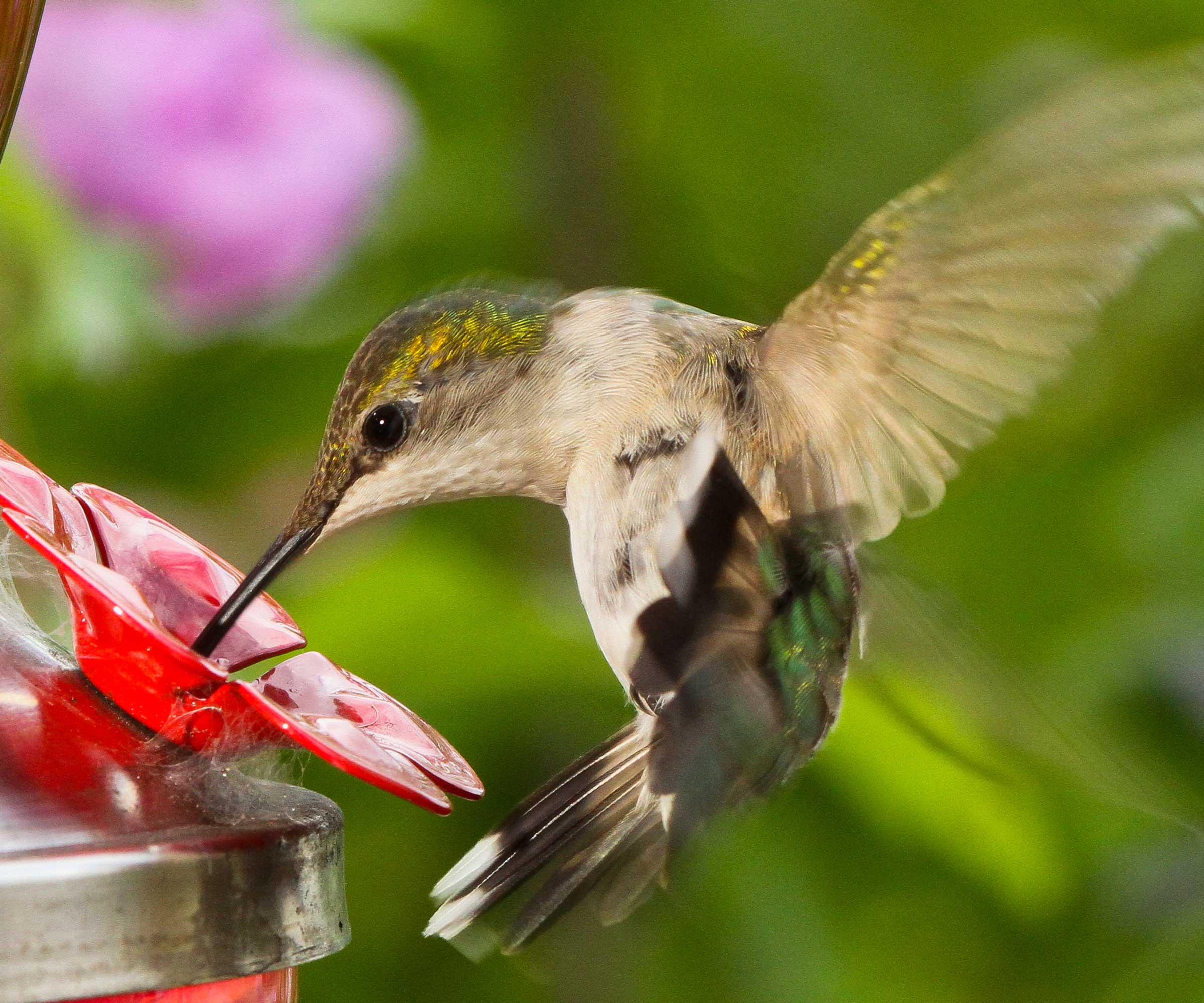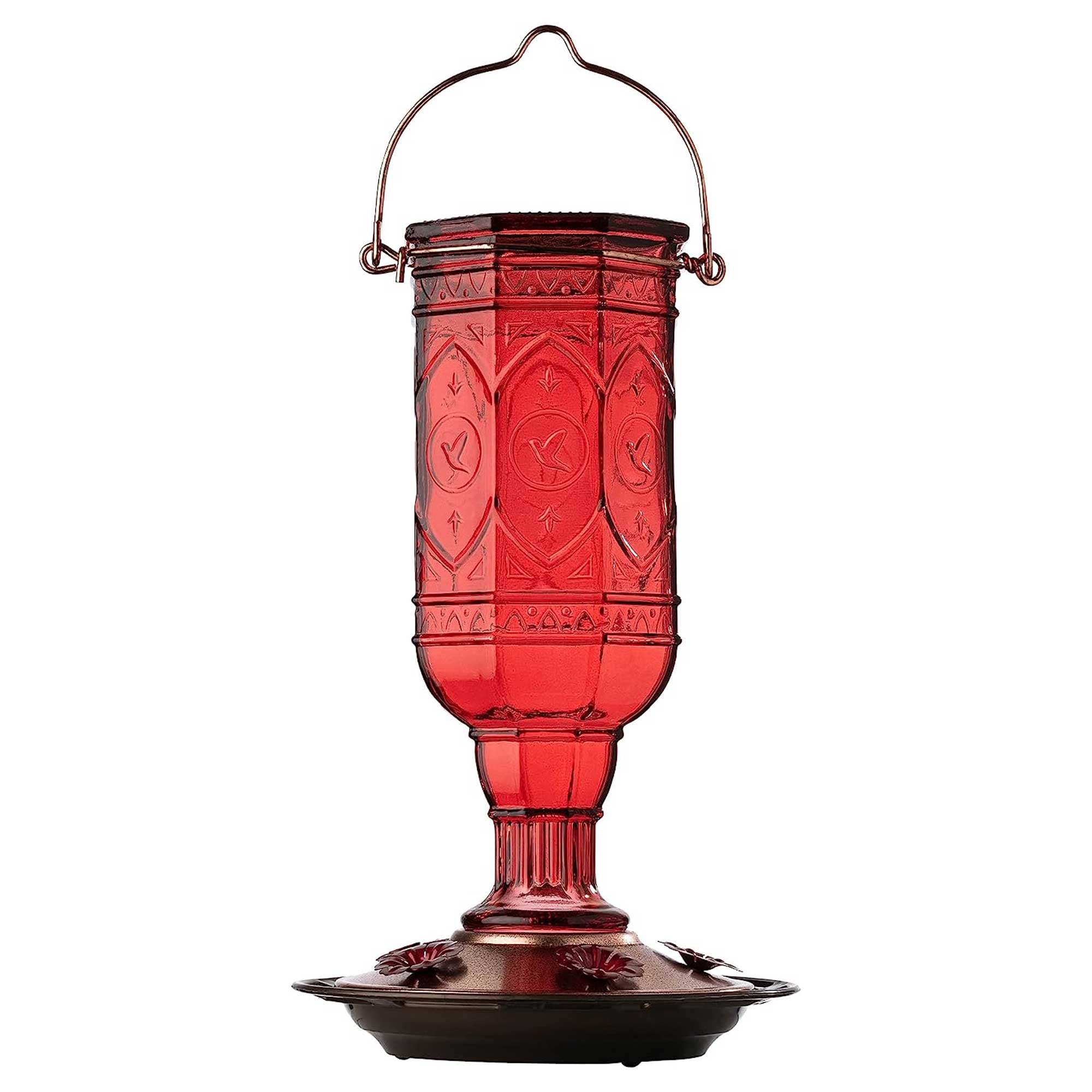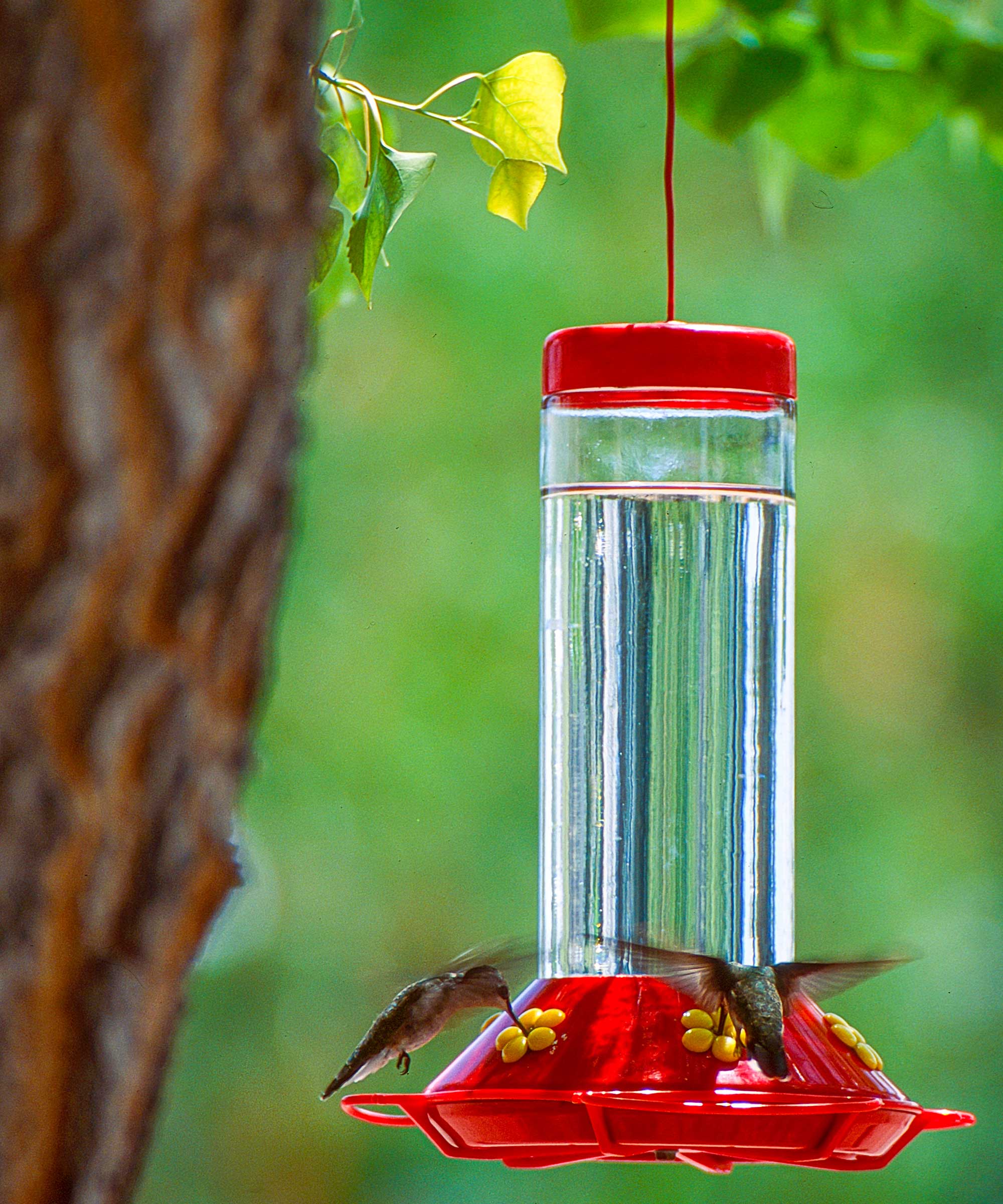How to make hummingbird food in 3 easy steps – to attract these feathered friends to your yard
Welcome these pretty birds to your plot with this simple recipe


Hummingbirds feast on nectar-rich flowers, but providing an extra source of food for them will up the chances of spotting them in your yard. So if you're looking to make your outdoor space more wildlife friendly, why not give it a go?
Marc Parnell, the bestselling author of The Birding Pro's Field Guides, available from Amazon, says, 'The feeding of hummingbirds has always been a very popular topic among my readers, and for good reason: it is accessible to birdwatchers of all skill and commitment levels, and no one can forget their first close sighting of a hummingbird.'
As Marc explains, the recipe for hummingbird food is very inexpensive – all you need is sugar and water to make this tasty treat.

You can make homemade 'nectar' for hummingbirds to enjoy
A step-by-step guide to making hummingbird food
At its essence, sugar water for hummingbirds is the same as dye- and preservative-free nectars, says Marc Parnell. He suggests the following process to make it at home:
- Bring approximately one cup of water (tap or distilled) to a boil.
- Add one-quarter of a cup of white sugar, frequently stirring.
- Once the sugar appears to be fully dissolved, allow the mixture to cool before filling your hummingbird feeder.
'Quantities can be easily multiplied if filling multiple (or larger-capacity) feeders,' he adds.
Kelsey Waddell of Wild Bird Scoop notes how any excess sugar water can be stored in the fridge for up to a week. 'Hummingbirds prefer fresh nectar, so try to change out the nectar in your feeder every few days,' she adds.
Kelsey also highlights the importance of keeping your hummingbird feeders clean. 'Clean them with a solution of water and vinegar weekly. This will prevent mold and bacteria growth.'
Design expertise in your inbox – from inspiring decorating ideas and beautiful celebrity homes to practical gardening advice and shopping round-ups.
What's more, keeping them clean and free from a buildup of sugar can also help to keep bees away from your hummingbird feeder.
Shop hummingbird feeders:

This vintage-style hummingbird feeder has great customer ratings. It holds 20 fluid ounces of nectar which the birds can access via five flower-shaped feeding ports.

Available in 9 vibrant colorways, this glass hummingbird feeder with four feeding ports doubles up as beautiful garden art. What's more, it's easy to assemble and clean.

A simple and durable three-port feeder perfect for hanging in a courtyard or a small patio. At under $7, it's super budget-friendly, too.

Kelsey is a freelance writer and amateur backyard-bird enthusiast living in southern Virginia. From the moment she moved from the suburbs to her current rural home, she was struck by the sights and sounds of the abundant wildlife. She's been watching, learning, and trying to attract more feathered friends ever since.

Red bird feeders attract hummingbirds
Other ways to attract hummingbirds into your yard
Once you've made your hummingbird food, be sure to place your hummingbird feeder in the best possible place – away from windows, outdoor mirrors, and places where predators, such as cats, can hide.
As well as this, think about the plants in your plot. 'Hummingbirds often appreciate high shrubs and trees for perching in-between their nectar-gleaning forays, while well-planted yards (particularly those with native vegetation) also tend to cater to a wider variety of birdlife in general,' says Marc.
In addition, you could aim to bring more flowers that attract hummingbirds into your outdoor space, as nectar is an important part of a hummingbird's diet. 'Red-colored, tubular flowers often attract hummingbirds in droves,' says Marc. 'Two of my favorite recommendations are bee balm and cardinal flower, which are both hardy in most North American planting zones.'

Plant red, tubular flowers to attract these tiny birds
FAQs
Should I dye my homemade hummingbird food red?
'Given that hummingbirds are naturally attracted to the color red, many birdwatchers purchase or make red-dyed nectar mixtures,' says Marc Parnell, the author of The Birding Pro's Field Guides.
However, artificial dyes may carry a health risk, he says, and the same hummingbird-attracting result can be achieved by using clear nectar or sugar water with a red-colored hummingbird feeder.
As well as providing the usual nuts and seeds for wild birds, consider boiling up some sugar water so you can welcome hummingbirds, too. It's so quick and easy to do, and seeing them flit to and fro is guaranteed to bring delight to any onlooker.

Holly started writing about gardening five years ago, and she is a regular contributor to Homes & Gardens. She has also written many gardening features for Woman & Home and Real Homes, too. She has previous experience as a professional gardener, where she helped to plant and maintain private gardens. Holly has also looked after allotment plots over the years and loves to grow her own flowers and veggies from seed. In her spare time, she enjoys visiting local gardens, botanical drawing, and tending to her ever-growing collection of houseplants.